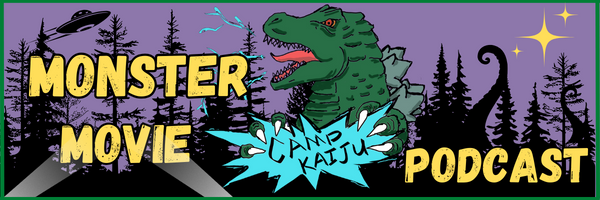
Leading the bandwagon behind Steven Spielberg’s Jaws, is the “Jaws with Claws” known as Grizzly. Directed by grindhouse auteur William Girdler, the movie about a killer grizzly bear was the highest-grossing independent movie in 1976. Its legacy, however, is far richer than any box office prestige. This is the film that kicked the cage open for other “nature run amok” pictures like Piranha, Orca, Alligator, Dogs, and Girdler’s own follow up, The Day of the Animals.
Director: William Girdler
Producer: Edward L. Montoro, Harvey Flaxman, David Sheldon
Writer: Harvey Flaxman, David Sheldon
Cinematography: William L. Asman
Cast: Christopher George, Andrew Prine, Richard Jaeckel
Runtime: 89 minutes
Country of Origin: USA
US Release: May 16, 1976 (Film Ventures International, Montoro Productions Ltd., Joda Productions)
Grizzly follows a group of hunters and researchers as they protect a Georgia national park from a rampaging grizzly bear. This bear, the remnant of an extinct prehistoric species, measures 18 feet tall and 2,000 lbs. For those unlearned in the ways of bear anatomy, that is an absurdly large animal; for comparison, the bear trained for the production only measured 11 feet tall. And that was the biggest brown bear the producers could find! The danger, therefore, is clear and present as campers are picked off one by one. Eventually the men (because this is a man’s job, dammit) corner the beast and have their climactic showdown, ending with one angry bear blown to smithereens.

As a 1970s independent feature, Grizzly is loaded with all the cheap-o sleaze you might expect; excessive nudity, gratuitous violence, and campy dialogue. While these may indicate an overall inferior product, Girdler manages to imbue that product with campy charm, ensuring a rip-roaring experience. This jen nes se quois differs from the recent Cocaine Bear, for example, which is just as gory yet lacks the sense of fun that makes Grizzly a quasi-classic. This can be seen in how limbs fly from their bodies, torn asunder by a less-than-convincing furry appendage. The waterfall scene itself is a lesson in genre-filmmaking, consciously using tropes to advance the story. As soon as the female tracker decides to nonsensically take her clothes off for a swim, we know she’s doomed; but we’re nevertheless caught-off-guard by the sheer audacity of that furry appendage pulling her into the cave, coloring the waterfall with her blood.
Where the film shows its age is with those female victims, who have a tendency to bare all just upon their demise. Furthermore, the bear preys almost exclusively on women, and any male deaths occur by proxy (such as the collapsing fire tower). Grizzly is a story about damsels-in-distress and their macho protectors; the end result is more of an eye-roll than a groan, but it nonetheless runs counter to 21st century gender dynamics. Perhaps the best example is the least obvious: halfway through the film our female lead, Allison Corwin (Joan McCall), is quietly forgotten; her story remains unresolved and nobody seems to care.
In fact, ironically, what all the men seem to care about are themselves, much like any band of brothers. It lends an interesting aspect to the film, especially in those moments where a glance seems to convey more than fraternal affection. Grizzly is not an exploration of homoeroticism, but it is an easy jump to make. Even the first victims are two women sharing a tent in the woods.
Grizzly may have been a cash-grab following the success of Jaws, but that in-and-of-itself creates a historical significance for the movie. And whereas Jaws is a landmark A-picture, so Grizzly established itself as a landmark of the B-movies; it is arguably as influential on cinema, blazing a trail for the so-called “nature-run-amok” genre where horror and camp are thrown together with outlandish results. In the case of Grizzly, yes, the results often miss their mark; but when the results land, it offers enough shock, charm, and technical expertise to make it an unforgettable experience.
by Vincent S. Hannam

Don’t miss the next review – subscribe here!
